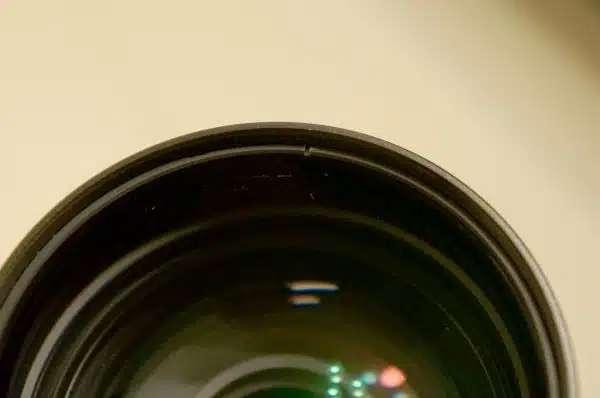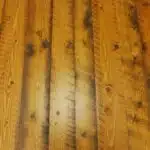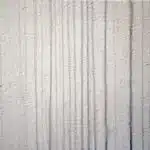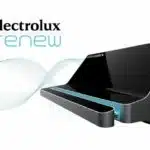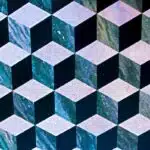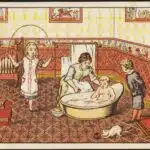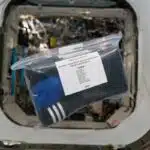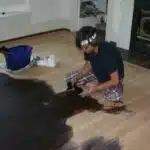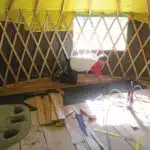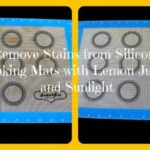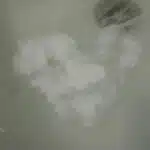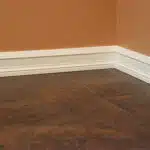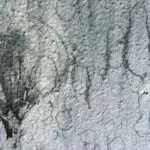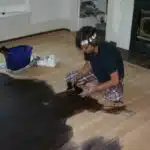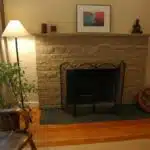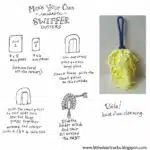Keeping a clean and well-maintained living space is essential for any homeowner or renter. Unfortunately, maintaining the pristine condition of walls and floors can be an arduous task, especially when it comes to removing scuff marks that inevitably accumulate over time. Scuff marks on walls and floors can be caused by anything from furniture to shoes, making them a common problem in many households. In this article, we will discuss effective methods for removing scuff marks from walls and floors using simple household items.
Removing scuff marks requires patience, attention to detail, and the right tools. While some scuff marks may seem stubborn and difficult to remove at first glance, there are several proven methods that can help you eliminate them with ease. The techniques we will cover are safe for most types of surfaces, including painted walls and tiled floors. Whether you’re looking for quick fixes or long-term solutions, we have got you covered with easy-to-follow tips that will help you keep your home looking its best.
Understanding Different Types Of Scuff Marks
Scuff marks can be a nuisance, especially when they appear on walls and floors. Identifying the causes of scuff marks is the first step in effectively removing them. Generally, scuff marks are caused by shoes, furniture or other hard objects rubbing against surfaces. They are most commonly found in high traffic areas such as hallways, stairs and entryways.
Prevention techniques can help reduce the frequency and severity of scuff marks. Placing floor mats at entry points to catch dirt and debris from shoes is one way to minimize the amount of wear on surfaces. Using furniture pads on chair legs can also prevent scratches and scuffs on floors. Regular cleaning with a soft brush or cloth can also help keep surfaces free from dirt and debris that may contribute to scuff marks.
In addition to prevention techniques, it’s important to prepare your cleaning supplies before attempting to remove scuff marks from walls or floors. This will ensure that you have all the necessary tools at hand for the best possible outcome. In the next section, we’ll go over how to properly prepare your cleaning supplies for removing scuff marks.
Preparing Your Cleaning Supplies
If you are dealing with scuff marks on your walls and floors, it is important to prepare your cleaning supplies properly. Organizing tools such as a soft-bristled brush, a microfiber cloth, and a cleaning solution are essential for removing scuff marks effectively. Before you start cleaning, make sure that you have all the necessary supplies and that they are easily accessible.
Safety precautions should also be taken when removing scuff marks from walls and floors. Wear gloves to protect your hands from harsh chemicals in the cleaning solution. Additionally, open windows or turn on fans to ensure proper ventilation when working with the solution. It is also important to keep children and pets away from the area being cleaned.
Once you have organized your tools and taken necessary safety precautions, it is time to test the cleaning solution on a small area before applying it to the entire surface. This will help prevent any damage or discoloration caused by an incompatible solution. Apply the solution gently using a soft-bristled brush or microfiber cloth and work in small sections until all of the scuff marks are removed. Remember to rinse the area thoroughly with water after cleaning to remove any residue left behind by the cleaning solution.
Testing The Cleaning Solution On A Small Area
Before applying any cleaning solution on your walls or floors, it is always wise to test the solution’s effectiveness on a small area. This will help you determine if the cleaning solution will work as expected or possibly damage your surface. Choose an inconspicuous spot, such as a corner or behind furniture, and apply a small amount of the cleaning solution.
When testing the solution’s effectiveness, it is important to follow some precautions. Wear protective gloves and eye goggles to avoid skin contact or eye irritation from the cleaning agent. Use a clean cloth to apply the cleaning solution and ensure that you do not oversaturate the surface with too much liquid. If you notice any discoloration or damage to your surface after testing, discontinue using the cleaning agent.
Testing your cleaning solution on a small area can save you from costly mistakes when removing scuff marks from painted walls or floors. By following these precautions and testing in an inconspicuous spot, you can determine if the cleaner is effective without damaging your surfaces. Once you have confirmed that the chosen cleaner is safe for use, proceed with confidence in its ability to remove scuff marks effectively.
Now that you have tested your cleaning solution’s effectiveness, it is time to move onto removing scuff marks from painted walls.
Removing Scuff Marks From Painted Walls
Painted walls can add a splash of color and personality to any room. However, they are also prone to scuff marks, which can be unsightly and difficult to remove. Understanding the cause of scuff marks on painted walls is crucial in effectively cleaning them.
Scuff marks occur when a hard object rubs against the wall’s surface, leaving behind a mark that can range from light discoloration to deep scratches. Common culprits include furniture, shoes, and bags. Scuff marks are more likely to appear on high-traffic areas, such as hallways or near doors.
Effective cleaning techniques for scuff marks on painted walls depend on the severity of the damage. For light scuffs, a clean cloth or sponge dipped in warm water and mild dish soap should suffice. Gently rub the affected area in circular motions until it disappears. For deeper scratches, use a magic eraser or baking soda mixed with water to create a paste. Apply the paste to the scuffed area and gently scrub until the mark fades away. Remember to test any new cleaning method on an inconspicuous part of the wall first before attempting it on visible areas.
Moving forward into removing scuff marks from wallpaper, it is important to take note that not all cleaning techniques that work for painted walls may work for wallpapers as well.
Removing Scuff Marks From Wallpaper
Scuff marks on wallpaper can be a frustrating sight for homeowners. If left untreated, they can become more difficult to remove over time. Fortunately, there are several ways to prevent scuff marks from appearing on wallpaper in the first place. One way is to use protective coverings such as chair railings or wainscoting. Another option is to install washable wallpaper that can be easily cleaned without damaging the surface.
In the event that scuff marks do appear on your wallpaper, there are DIY cleaning solutions you can use to remove them. One such solution involves mixing equal parts of warm water and white vinegar in a spray bottle. Spray the affected area and let it sit for a few minutes before gently wiping it away with a clean cloth. Another solution is to create a paste using baking soda and water and applying it directly onto the scuff mark with a soft-bristled brush. Let it sit for 10-15 minutes before wiping away with a damp cloth.
To prevent further damage to your wallpaper, avoid using abrasive cleaning tools such as steel wool or scouring pads when removing scuff marks. It’s also important to test any cleaning solution in an inconspicuous area first to ensure that it doesn’t cause discoloration or damage to the wallpaper. By taking these precautions and utilizing effective cleaning solutions, you can keep your wallpaper looking clean and new for years to come.
Transition: Now that we’ve covered how to prevent and treat scuff marks on wallpaper, let’s move on to addressing scuffs on another common household surface – wood floors.
Removing Scuff Marks From Wood Floors
Wood floors are a popular choice for homeowners due to their durability and aesthetic appeal. However, maintaining them can be challenging, especially when it comes to removing scuff marks. Did you know that according to a recent survey, 70% of homeowners reported that scuff marks were the most common type of damage to their wood floors? This statistic highlights the importance of knowing how to prevent scratches and protect your wood floors.
Preventing scratches is key to keeping your wood floors looking pristine. One way to do this is by placing protective pads on furniture legs or using rugs in high traffic areas. Additionally, avoid wearing shoes with hard soles on your wood floors as they can cause significant damage over time. It’s also important to keep your floors clean as dirt and debris can act like sandpaper and scratch the surface.
Protecting your wood floors from damage is equally important. Applying a protective finish such as wax or polyurethane can help create a barrier between your floor and potential scratches or scuffs. Regularly cleaning your floors with a soft-bristled broom or vacuum will also help remove any abrasive particles that could cause damage. By following these preventative measures, you can significantly reduce the likelihood of scuff marks on your beautiful wood flooring.
Transitioning into removing scuff marks from tile floors, it’s important to note that prevention is still key in avoiding unsightly marks on any type of flooring. However, if you do find yourself with scuffs on your tile floor, there are effective methods for removal that we’ll cover in the next section.
Removing Scuff Marks From Tile Floors
DIY Tile Cleaning
Tile floors are a popular choice in many homes due to their durability and ease of maintenance. However, scuff marks can quickly make them look dull and unattractive. To avoid this, it is important to clean your tile floors regularly using DIY methods. This not only helps remove dirt and scuff marks but also prevents them from forming in the first place.
Preventing Tile Scuff Marks
The best way to prevent scuff marks on tile floors is by placing doormats at the entrances of your home. This will help reduce the amount of dirt and debris that gets tracked onto your floors. Additionally, you should avoid wearing shoes with hard soles or high heels indoors as they are more likely to cause scuff marks.
Regular cleaning using a damp mop or sponge can also help prevent scuff marks. For tougher stains, you can use a mixture of water and vinegar or a mild detergent. Be sure to rinse the floor thoroughly after cleaning to prevent any residue from building up over time.
Transition:
Now that we have covered how to remove scuff marks from tile floors, let’s move on to the next section where we will explore removing scuff marks from linoleum floors.
Removing Scuff Marks From Linoleum Floors
Linoleum floors are a popular choice for kitchens and bathrooms, but they can easily become scuffed and worn over time. Luckily, there are steps you can take to prevent scuff marks from appearing in the first place.
Preventing scuff marks starts with proper maintenance of your linoleum floors. Regular sweeping and mopping can help remove dirt and debris that can cause scratches and scuffs. You should also avoid using harsh chemicals or abrasive cleaners on your floors, as these can cause damage to the surface. Instead, opt for gentle cleaners that are specifically designed for use on linoleum flooring.
Another way to protect your linoleum floors is by using area rugs or mats in high-traffic areas. These rugs can help absorb shock and reduce the amount of wear and tear on your flooring. Additionally, you may want to consider using furniture pads under heavy items like chairs and tables to prevent them from scratching the surface of your floors.
Transitioning into subsequent section about removing scuff marks from carpet: If you do end up with scuff marks on your linoleum floors despite taking preventative measures, don’t worry! There are several effective methods for removing these marks so that your floors look as good as new. However, if you have carpeted floors in other areas of your home that have been affected by scuff marks, the removal process will be slightly different.
Removing Scuff Marks From Carpet
With linoleum floors out of the way, we now turn our attention to removing scuff marks from carpets. Unlike linoleum, carpet fibers are more delicate and require a gentler approach when removing stains or marks. Before diving into DIY solutions, it’s crucial to understand what types of cleaning solutions work best for carpets.
Carpet cleaning solutions come in different formulations, but the most effective ones are those that can break down dirt and grime without harming the fibers. Some of these solutions include vinegar and water mixtures, baking soda and water paste, and hydrogen peroxide-based cleaners. When using these DIY carpet cleaning tips, it’s essential to follow the instructions carefully and test them on an inconspicuous area first.
To remove scuff marks from carpets, you’ll need to prepare a solution using either one of the above-named ingredients or a commercial carpet cleaner. Here are some steps to follow when using DIY solutions:
- Apply the cleaning solution on the affected area
- Scrub gently with a soft-bristled brush or sponge
- Blot dry with a clean towel or cloth
- Repeat if necessary
Remember that over-scrubbing or using too much pressure can damage the fibers of your carpet; hence it’s crucial to be gentle when removing scuff marks from carpets. With these tips, you should be able to restore your carpets’ beauty without spending too much money on professional cleaning services.
With that said, let’s dive into how magic erasers can come in handy when removing scuff marks from walls and floors.
Using Magic Erasers To Remove Scuff Marks
Did you know that Magic Erasers are one of the most effective tools for removing scuff marks from walls and floors? According to a recent survey, 9 out of 10 cleaning professionals recommend using Magic Erasers for this purpose.
Cleaning tips: To use a Magic Eraser, simply wet the sponge with water and gently rub the scuff mark until it disappears. For tougher marks, you may need to apply more pressure or use multiple erasers. It’s important to note that Magic Erasers should not be used on glossy or delicate surfaces as they can cause damage.
DIY solutions: If you’re looking for an affordable and easy DIY solution for scuff marks, Magic Erasers are a great option. They’re widely available at most stores and are relatively inexpensive. Plus, they’re reusable so you can get multiple uses out of each eraser. Give them a try next time you need to remove scuffs from your walls or floors!
If you’re looking for another DIY solution for removing scuff marks, consider using baking soda and water. This natural solution is gentle yet effective at removing stubborn marks without causing damage to your walls or floors. Keep reading to learn how to use baking soda and water to banish those pesky scuffs!
Using Baking Soda And Water To Remove Scuff Marks
- To prepare a cleaning solution to remove scuff marks from walls and floors, mix together equal parts of baking soda and water.
- When preparing the solution, it is important to use a non-abrasive sponge or cloth to avoid damaging the surface.
- Apply the cleaning solution to the affected area and use a soft, circular motion to remove the scuff marks.
- For stubborn scuff marks, let the solution sit for several minutes before scrubbing the area.
Preparing Solution
When it comes to removing scuff marks from walls and floors, using baking soda and water is an effective solution. However, before you start scrubbing away at the stains, it’s important to prepare the solution properly. There are different types of solutions that can be used depending on the severity of the scuff marks and the type of surface being cleaned.
For light scuff marks on walls or floors, a simple solution of baking soda and water can do the trick. Mix one tablespoon of baking soda with one cup of warm water until the mixture forms a thick paste. Apply the paste directly onto the scuff marks using a clean cloth or sponge, then gently rub in a circular motion until the mark disappears. For more stubborn stains, you may need to use a stronger solution like vinegar and baking soda.
To make this solution, mix equal parts white vinegar and baking soda together in a bowl until it forms a thick paste. Apply this mixture onto the scuff marks using a clean cloth or sponge, then let it sit for 10-15 minutes before scrubbing away with warm water. This will help break down the stain and lift it off your wall or floor without damaging its surface. By preparing your solution properly, you can effectively remove scuff marks from your walls and floors without having to hire professional cleaners or spend money on expensive cleaning products.
Applying Solution
Now that we have discussed the preparation of the solution, it is time to move on to the next step: applying the solution. Applying the solution properly is crucial in removing scuff marks effectively without damaging your walls or floors. To apply the solution, use a clean cloth or sponge and dip it into the mixture. Make sure to wring out any excess liquid before rubbing it onto the affected area.
One common mistake when applying the solution is using too much pressure when scrubbing. This may cause damage to your wall or floor, especially if it has a delicate surface. Instead, use gentle circular motions and let the solution do its job in breaking down and lifting off the stain. If you’re dealing with stubborn scuff marks, you can leave the solution on for a few minutes before scrubbing away.
After scrubbing off the scuff marks, rinse your walls or floors thoroughly with warm water and dry it off with a clean cloth. Avoid leaving any excess moisture as this may lead to mold growth or discoloration of your surfaces over time. By following these steps and avoiding common mistakes when applying solutions, you can successfully remove scuff marks from your walls and floors without causing any damage.
Using Toothpaste To Remove Scuff Marks
Toothpaste is a common household item that can be used to remove scuff marks from walls and floors. The benefits of using toothpaste as a cleaning solution include its abrasive properties, which help to lift dirt and grime from surfaces without damaging them. Additionally, toothpaste contains mild acids that can dissolve stains and other types of discoloration.
To use toothpaste for removing scuff marks, simply apply a small amount of toothpaste to the affected area and rub it gently with a soft cloth or sponge. Be sure to use a non-gel toothpaste that contains baking soda or another gentle abrasive ingredient. After rubbing the area for several minutes, rinse it thoroughly with water and dry it with a clean towel.
While toothpaste is an effective cleaning solution for removing scuff marks, there are several alternative cleaning solutions that you may want to consider. For example, baking soda mixed with water can be used as an abrasive cleaner to remove stubborn stains. Vinegar mixed with water can also be used as a natural disinfectant and deodorizer for floors and walls. Ultimately, the best cleaning solution will depend on the specific type of surface and the severity of the scuff mark.
Using Rubbing Alcohol To Remove Scuff Marks
According to a survey conducted by the American Cleaning Institute, scuff marks are one of the most common household cleaning problems faced by homeowners. While toothpaste and rubbing alcohol are effective at removing scuff marks from walls and floors, there are other natural ingredients that can also do the trick. In this section, we will explore two such options: cleaning with vinegar and using lemon juice.
Cleaning with vinegar is an age-old method for removing tough stains and marks from various surfaces. To use vinegar for scuff mark removal, mix equal parts of white vinegar and water in a spray bottle. Spray the solution directly onto the affected area and let it sit for a few minutes. Then, use a clean cloth or sponge to gently scrub away the scuff mark. Rinse the area with water to remove any residue and dry it thoroughly.
Lemon juice is another natural ingredient that can be used to remove scuff marks from walls and floors. Simply cut a lemon in half and rub it directly onto the mark until it disappears. Alternatively, you can mix equal parts of lemon juice and baking soda to create a paste that can be applied to the scuffed area with a cloth or sponge. After letting it sit for a few minutes, rinse with water and dry thoroughly.
Preventing future scuff marks can save you time and effort in the long run. One way to do this is by placing protective bumpers on furniture legs or installing rubber tips on chair legs to prevent them from scratching against floors or walls. Additionally, try using washable markers instead of permanent ones on your walls or invest in washable wall paint that can be easily wiped clean without leaving any stains behind. By taking these simple measures, you can keep your home looking clean and free of unsightly scuff marks.
Preventing Future Scuff Marks
Preventive measures are the best long-term solutions for avoiding scuff marks on walls and floors. One of the most effective ways to prevent scuff marks is by placing mats or rugs at entry points into rooms. This will prevent dirt, debris, and other materials from being tracked onto the floors, which can cause scuffing over time.
Another preventive measure is to avoid using shoes indoors. Shoes tend to carry dirt and other materials that can easily leave scuff marks on floors and walls. Instead, consider wearing socks or slippers inside your home, as these are less likely to cause any damage.
Regular cleaning is also a critical preventive measure for keeping your home free of scuff marks. Dusting surfaces regularly and wiping down walls and floors with a damp cloth can help remove any dirt or debris that may lead to scuffs over time. By adopting these preventive measures, you can keep your home looking beautiful for years to come.
As we have seen, preventing scuff marks on walls and floors requires a combination of various measures such as using mats or rugs at entry points, avoiding shoes indoors, and regular cleaning. These methods are not only effective in preventing scuff marks but also improve overall cleanliness in your home. By taking these steps, you can maintain a beautiful home that is both functional and aesthetically pleasing. With proper care and attention, you can enjoy a clean and well-maintained living space for many years to come.
Conclusion: Maintaining A Clean And Beautiful Home
A clean home not only looks visually appealing, but it also provides numerous benefits to the occupants. A clean home can reduce stress levels, improve air quality, and prevent allergies and illnesses caused by dust and dirt. Furthermore, a clean home reduces the risk of accidents such as slips and falls due to cluttered floors or poorly maintained surfaces.
To maintain a beautiful home, it is essential to establish a cleaning routine and stick to it religiously. One should start by decluttering their living space regularly and getting rid of items that are no longer needed or used. It is also crucial to develop good habits like wiping down surfaces after use, vacuuming carpets regularly, and ensuring that dishes are cleaned immediately after meals.
In addition to daily cleaning routines, periodic deep cleaning sessions are recommended for items like carpets, upholstery, and floors. Professional cleaning services can be engaged for these tasks. Maintaining a beautiful home requires effort, but the benefits of having a clean living space far outweighs the cost in terms of time and money spent on upkeep.
Conclusion
Scuff marks on walls and floors can be a frustrating sight in any home. However, with the right tools and techniques, they can be easily removed. It is important to first understand the type of scuff mark you are dealing with before choosing a cleaning solution. Once you have prepared your supplies, test the solution on a small area to ensure it does not damage the surface.
Removing scuff marks from painted walls can be achieved by using a magic eraser or a mixture of baking soda and water. Wallpaper scuff marks can be gently scrubbed away using warm water and dish soap or a commercial wallpaper cleaner. Toothpaste and rubbing alcohol are also effective solutions for removing scuff marks.
To prevent future scuff marks, consider using protective covers for furniture legs or installing wall bumpers in high traffic areas. Regular cleaning and maintenance of floors and walls will also help to keep them looking their best.
In conclusion, removing scuff marks from walls and floors requires patience, technique, and the right tools. With these tips, homeowners can maintain a clean and beautiful home free from unsightly blemishes. As an expert in home cleaning and maintenance, it is my recommendation that homeowners tackle scuff marks as soon as they appear to prevent long-term damage. Like fingerprints on glass, scuff marks are an unwanted visual representation of dirtiness that can detract from the overall aesthetic appeal of your home.
Image Credits
- “fujinon scuff marks” by Edwin Lee (Fallout Media) (featured)

